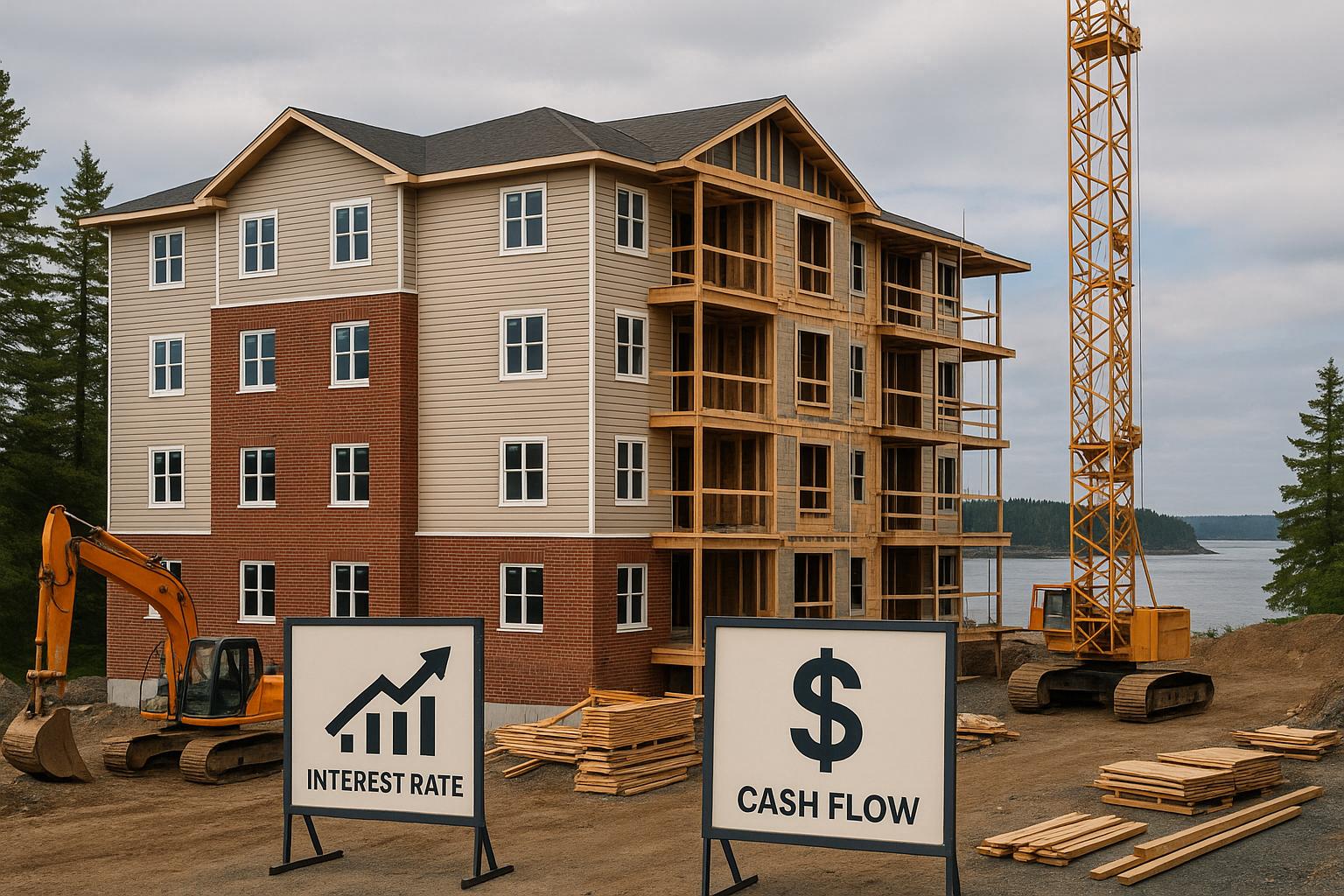Building a stable and scalable property portfolio can seem daunting, particularly for landowners near Halifax who are considering developing 4+ unit rental properties. Whether you’ve experienced construction mishaps, are embarking on your first development, or are adding to an existing portfolio, this guide distills insights into actionable steps. Drawing from strategies discussed in a content-rich discussion by seasoned real estate professionals, this article explores the three essential phases of property investment: strategy, buying, and holding.
By focusing on the unique challenges and opportunities of rental property development, this guide aims to simplify complex processes and empower property owners to grow their real estate ventures with confidence.
Phase 1: Laying the Foundation – Crafting the Right Strategy
Before committing to any construction or investment, the cornerstone of success is a robust strategy. This phase involves understanding where you are financially and where you want to be in the short and long term.
1. Assessing Your Budget and Goals
- Understand Your Financial Position: Review your income, expenses, and borrowing capacity. Understanding your serviceability – what banks will lend and how much you can invest – is critical.
- Long-Term Vision: Begin with the end in mind. What do you hope to achieve in 15 to 20 years? Many investors aim for passive income by owning properties outright, or they plan to sell properties for a cash windfall.
- Reverse-Engineer Your Goals: Let your long-term vision guide short-term actions. For example, if your goal is to generate a passive income of $200,000 annually, calculate how many units or properties are needed to get there.
2. Identifying Obstacles
- Past Construction Issues: Many property owners may have faced delays or cost overruns. Learn from past mistakes and partner with builders who offer guarantees and transparency.
- Overwhelmed First-Time Developers: If you’re new to building, the complexity of construction might feel paralysing. Knowledge is your ally - educate yourself or engage experts who can help you navigate the process.
- Common Biases: Avoid emotional decisions or location biases. Use data to make informed choices about where to build or invest.
Phase 2: The Buying Process – Choosing Land and Property Wisely
When it comes to purchasing land or properties for development, success lies in data-driven decisions. This is where investors often differentiate between an average property and one that yields exceptional returns.
1. Choosing the Right Market
- Metro Markets Outperform: Historically, metro markets have outperformed regional areas in Australia by over 125% in capital growth over 30 years. While this analysis is based on Australian data, a similar principle applies in Canada - urban centres like Halifax/Dartmouth hold more potential for growth than rural areas.
- Timing Matters: Look for markets that are undervalued or have not seen significant appreciation recently. For example, properties in areas with slower recent growth often rebound strongly over time.
2. Zeroing in on the Right Suburb
- Leverage Historical Trends: Study 10-year, 3-year, and 1-year average price growths of suburbs. Areas that have lagged behind others in recent growth often present strong buying opportunities.
- Vacancy Rates and Infrastructure: Low vacancy rates (below 2%) signal strong rental demand, while proximity to infrastructure (schools, transit, or hospitals) adds long-term value.
3. Picking the Right Property
- Land Value Over Building: Remember, it’s the land that appreciates, not the structure. Prioritise larger blocks in established areas over flashy new developments in outer suburbs.
- House vs. Multi-Unit Builds: While single-family homes can be effective investments, multi-unit properties such as fourplexes often yield higher rental returns due to economies of scale.
- Consider Tenant Demand: Homes with three or more bedrooms and additional living spaces are increasingly in demand, particularly as remote work becomes more common.
Phase 3: Holding for Long-Term Success
Property ownership is often the longest phase in your real estate journey, yet it is critical for ensuring stable and increasing returns.
1. Ongoing Maintenance
- Proactive Repairs: Regularly maintain properties to prevent long-term issues. This includes annual checks for roofing, plumbing, and HVAC systems.
- Tenant Turnover Best Practices: Each time tenants move out, invest in a bond clean, carpet cleaning, and general touch-ups to keep properties in pristine condition.
2. Working with Experts
- Property Managers: A reliable property manager is indispensable, especially for multi-unit properties. They handle tenant relations, legal compliance, and day-to-day operations, freeing up your time.
- Accountants and Tax Planners: With proper tax advice, you can maximise deductions and take advantage of depreciation schedules for your rental properties.
3. Rent Adjustments
- Annual Reviews: Conduct yearly rent reviews to ensure your properties are aligned with market rates. This simple practice can significantly boost your returns over time.
Key Takeaways
- Start with Strategy: Assess where you are financially and define your long-term objectives. Reverse-engineer your goals to create actionable steps.
- Invest in Metro Markets: Focus on urban locations near Halifax, as these areas offer stronger long-term growth potential than rural or remote areas.
- Data-Driven Suburb Selection: Use historical growth trends and current vacancy rates to identify undervalued suburbs with strong potential.
- Prioritise Land Value: Choose properties with higher land-to-building ratios to maximise capital appreciation.
- Plan for Tenant Appeal: Opt for properties with three or more bedrooms, home office spaces, or proximity to desirable amenities.
- Build a Trustworthy Team: Collaborate with property managers, accountants, brokers, and solicitors to streamline your journey.
- Proactively Maintain Assets: Keep your properties in excellent condition to preserve their value and attract quality tenants.
- Adjust Rents Regularly: Stay on top of annual rent adjustments to keep up with the market and inflation.
- Leverage Tax Benefits: Work with a tax professional to maximise deductions and utilise depreciation schedules.
- Think Long Term: Property investment is a marathon, not a sprint. Patience and consistent effort yield the best returns.
Final Thoughts
Building a successful rental property portfolio near Halifax is an achievable goal when approached methodically. By focusing on the strategy, making informed purchases, and proactively managing your properties, you can create a sustainable source of income while avoiding common pitfalls. Whether you’re a seasoned investor or just starting, these principles provide a solid foundation for long-term success.
Remember, investing in rental properties is not a passive endeavour - it requires dedication, thoughtful planning, and a team of reliable advisers. With the right approach, you can turn underutilised land into a thriving real estate venture, creating financial freedom and stability for years to come.
Source: "45 Rules To Never Buy A Bad Investment Property Again" - Pumped on Property, YouTube, Aug 8, 2025 - https://www.youtube.com/watch?v=xjilEUTZ5iA
Use: Embedded for reference. Brief quotes used for commentary/review.



